12 Powerful Examples of Video Marketing for Automotive
.png)
Video is the perfect medium to portray an automotive's value in a storytelling format. It influences consumer perception by fueling their aspirations to be in the driving seat.
As an automotive brand, there's a lot you can do with video marketing to attract quality, high-intent leads. So, join us as we take you through real examples, ideas, and best practices to help you make the most of your video content.
Why video marketing is pivotal for automotive brands
From a strategy perspective, video marketing gives you an edge by creating memorable moments for buyers. And these memorable moments may be what customers need right now, as 88% of potential car buyers research vehicles online.
In between the information overload, engaging videos boost buyer intent:
- As much as 89% of viewers are influenced to purchase a product by watching its video.
- On the business side, 67% of marketers have seen the most significant gains (maximum ROI) from social videos on YouTube, Instagram and TikTok.
- Video marketing has helped 90% of marketers generate leads.
Automotive advertisers are already taking strategic steps to create more videos, increasing online video investment by 20% to more than $1.25 billion in 2023.
The figures above show that online videos are not just a passing trend but a long-term strategy for success. How can you make the most of them to attract quality leads?
We tackle this with practical ideas inspired by real examples.
12 video marketing examples to attract high-intent automotive leads (with ideas)
Here are 12 examples and ideas to take your video marketing strategy to the next level.
A. Brand-led videos
Brand-led videos tie back to your brand values and objectives. They give customers a deeper look into your brand culture and thought-processes behind your products.
An insider perspective reinforces your brand image and affinity, which becomes fiscally crucial in the long run.
How brands use brand-led videos
- Fiat
Fiat wanted to not make ‘boring grey cars'. Instead, it switched tactics to ‘living life the Italian way' and spreading smiles with colourful cars.
The brand leaned entirely into the new strategy, accompanying the announcement with a bold video. The CEO, Olivier Francois, makes an appearance in a grey Fiat 600e, which is then dipped into a vat of orange paint.
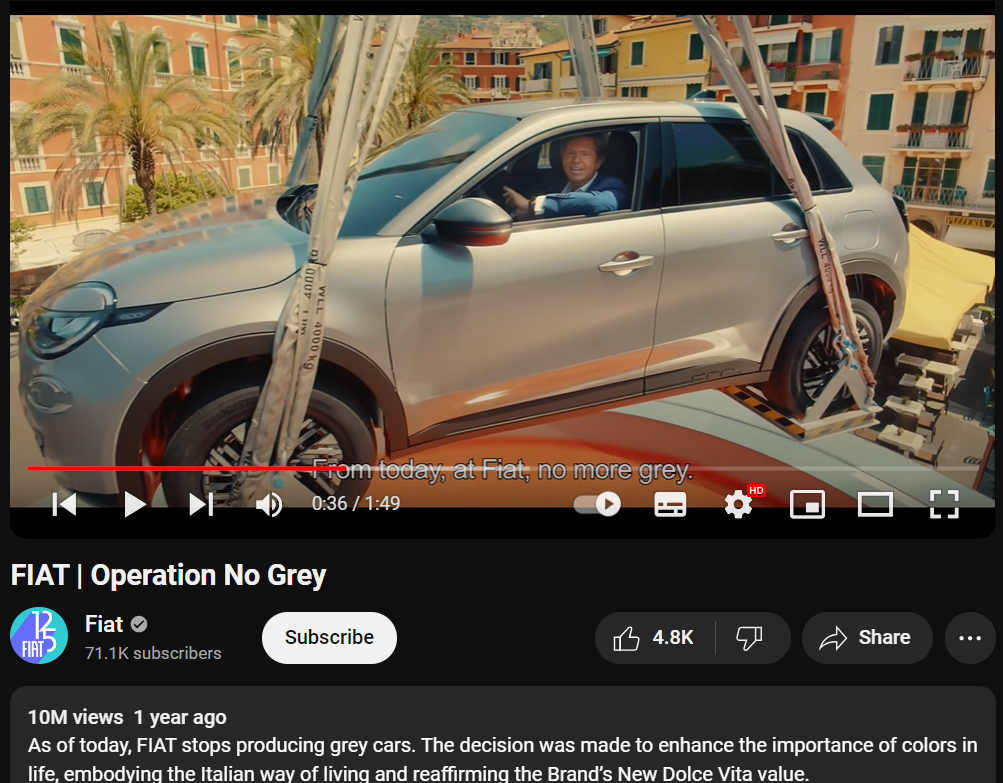
Audiences sat up and took notice of this definitely-not-a-normal-car-ad!
Ever since, Fiat has stuck to the colourful cars and smiles-driven messaging, which is evident in its 125th anniversary video.

- Hyundai
For a long time, UK audiences have mispronounced the brand's name. Hyundai decided to set the record straight with a humorous video.
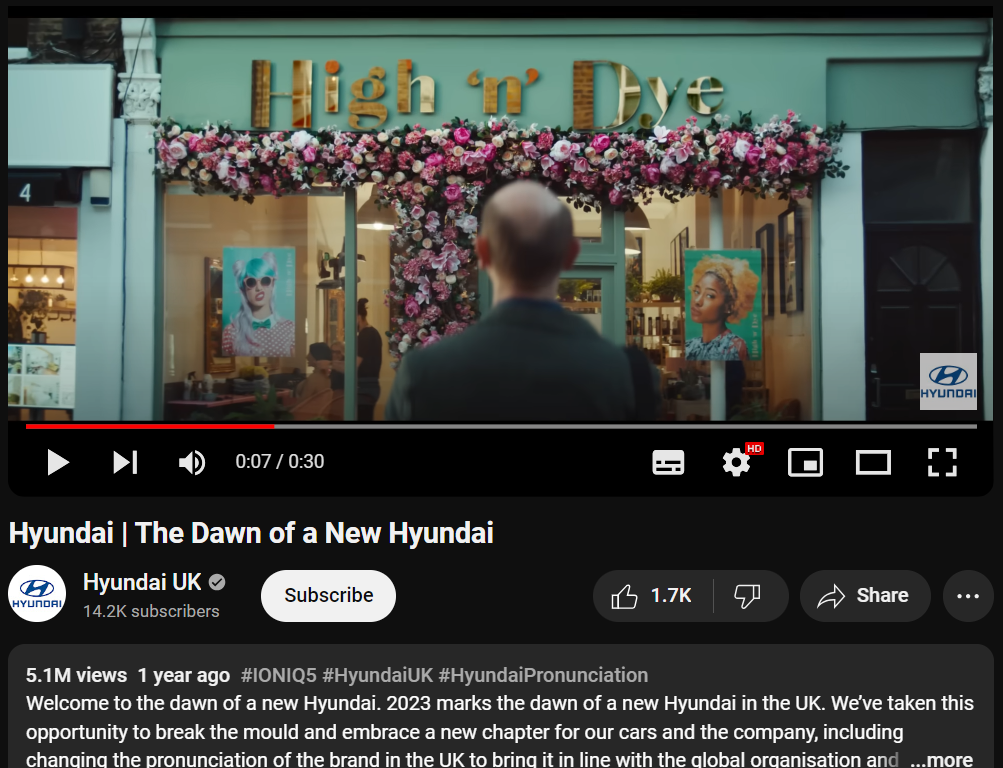
It showed people using voice search to find Hyundai stores but hilariously ending up at the wrong locations. The brand's light take on its mispronounced name received positive results, tripling brand consideration!
B. Product videos: Launch announcements
In the automotive industry, a product video becomes an online event with several thousands watching it as soon as it's live, particularly for launching new or upgraded models.
It's a first glimpse into your product. Naturally, you shouldn't miss out on building up the hype!
How brands use product launch videos
- Kia
Kia maximised eyeballs by tapping into the Super Bowl and building an emotional connection to their latest launch—EV9. The video included characters across generations, appealing to all age groups.
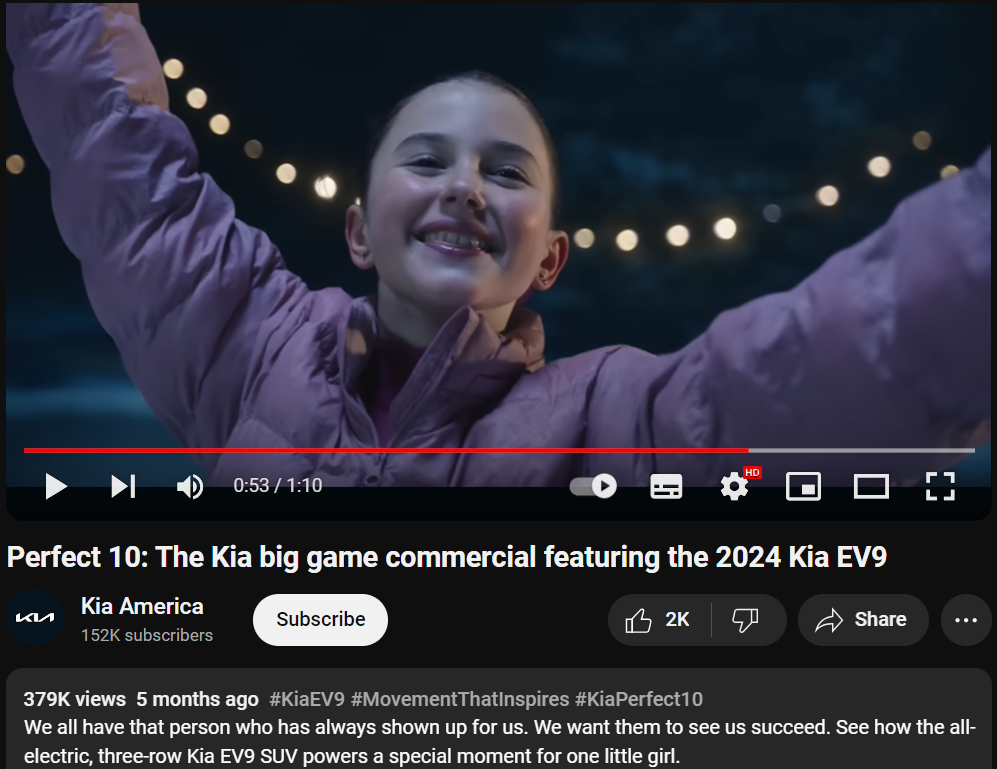
Comments on the YouTube video are proof of how the ad touched people on a personal level. Not only did it create awareness for the car but also the brand.
- Mercedes-Benz
Mercedes-Benz went all in with its sporty DNA for the AMG GT63 PRO launch. The brand used short-form videos for more significant impact, while captions across platforms align with the video's tone–bold and crisp.
Instagram Reels captured fast-paced action shots of the car around the racetrack. They show the car in its natural element and exactly why it's built for speed.
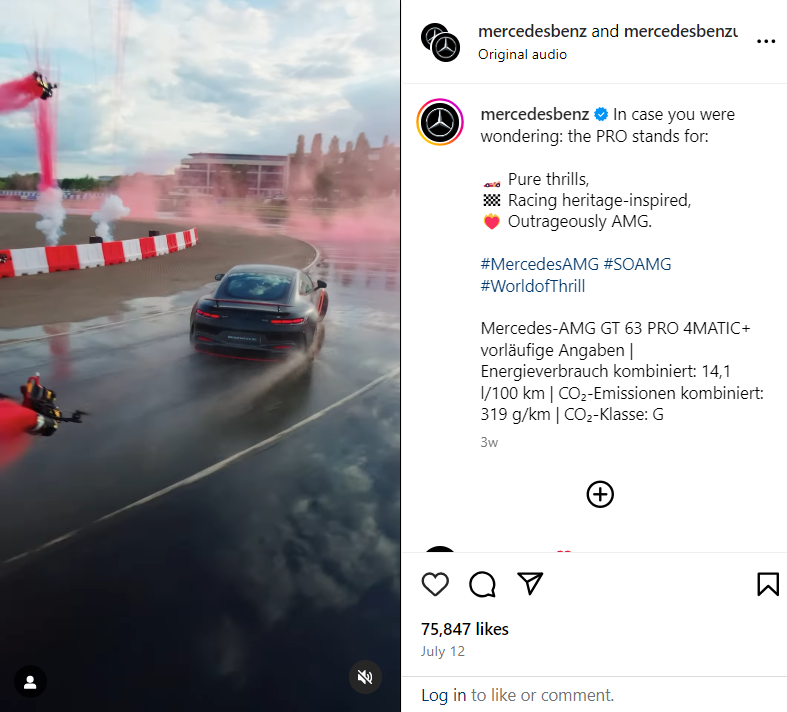
On TikTok, the brand used an ASMR-style unveiling of the car to fuel the hype.
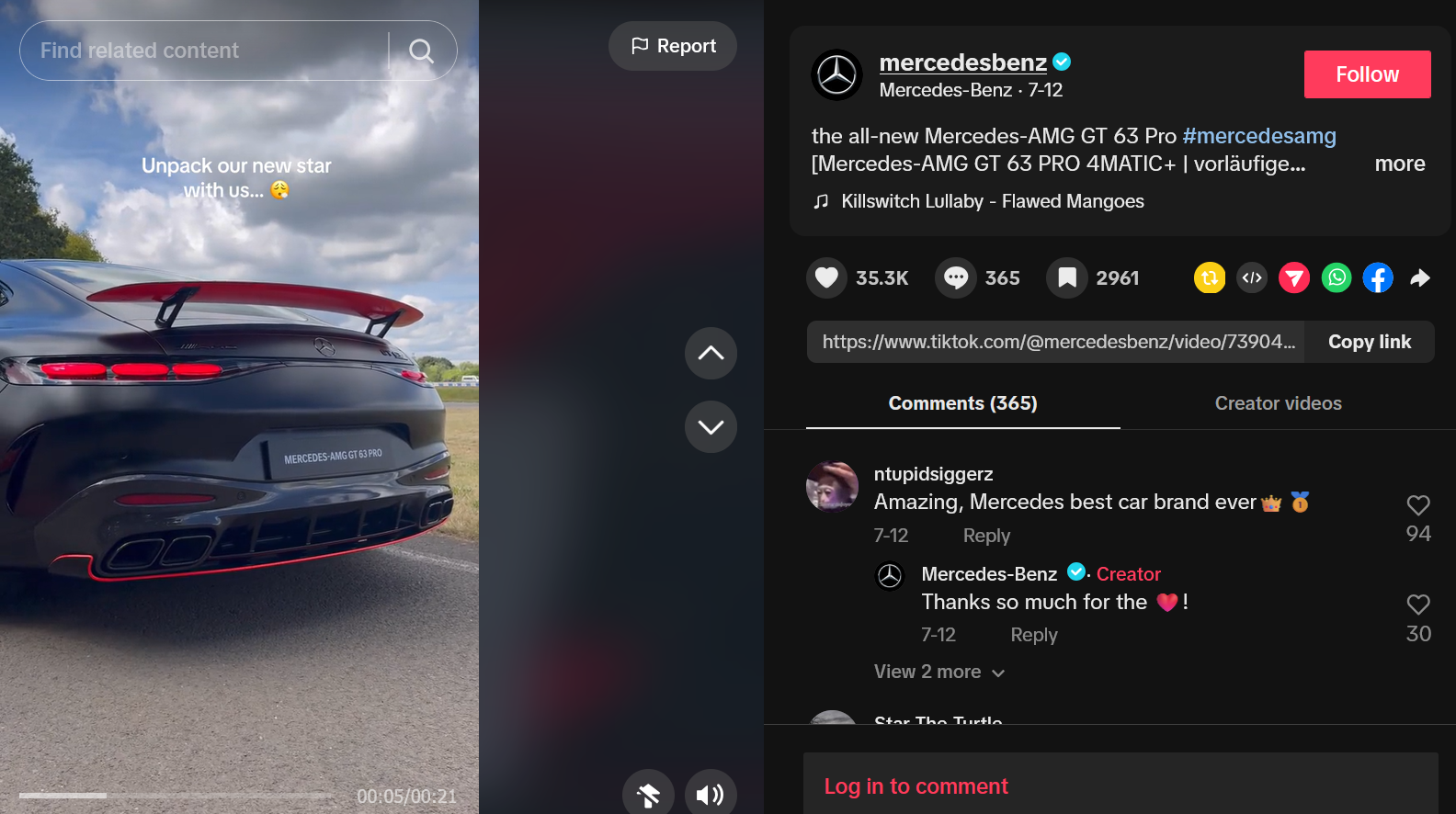
C. Product videos: Demos and walkthroughs
While launching a product is a significant event, what happens after is equally, if not more important.
Giving audiences an in-depth insight into your automotive products makes them ‘informed buyers', influencing them to purchase from you.
These insights could include technologies, materials, infotainment systems and even seats.
How brands use product demos and walkthroughs
- Bugatti
Each Bugatti car is an innovation, loaded with high-tech features and engine specifications that need a detailed walkthrough.
Mate Rimac, the CEO himself, tours the brand's latest powerhouse ‘Tourbillon' with Matt Watson (from 'carwow').
Matt is well-loved in the automotive community and one of the most followed car reviewers today. Bugatti benefits from Matt's and carwow's popularity by posting it on their YouTube channel (currently 9.4 million subscribers).
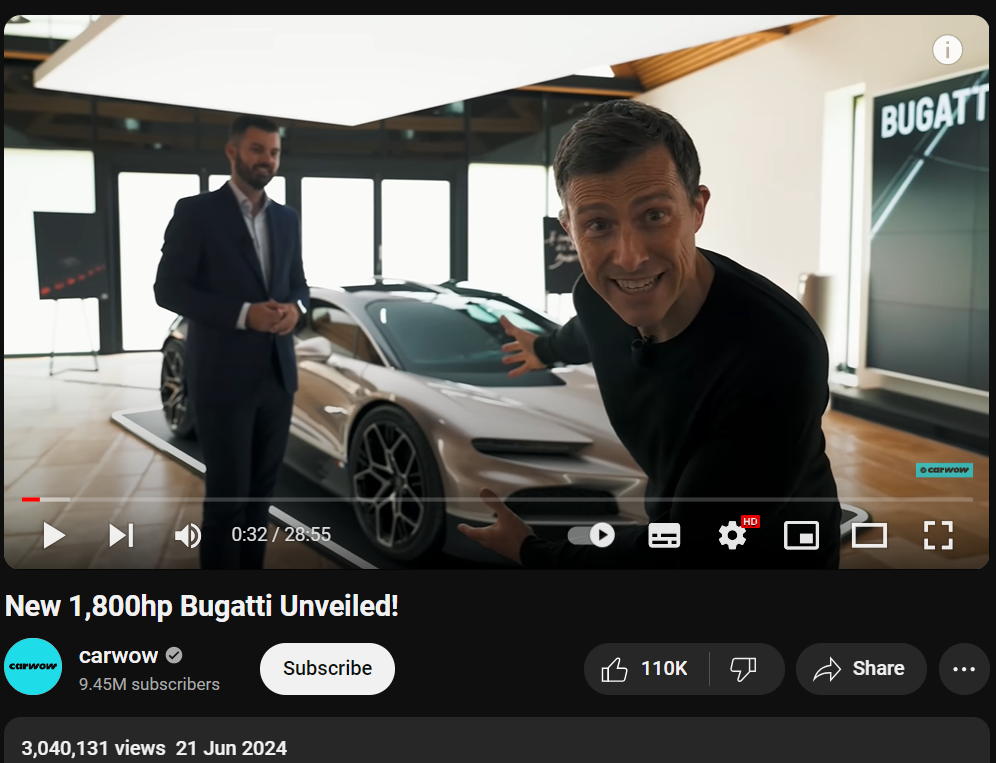
With Matt Watson and carwow, Bugatti reached a much larger audience than its own marketing channels.
- Ford Motor Company
Unlike Bugatti, Ford decided a short, snackable video would be best for the Mustang GTD (the brand's highest horsepower street-legal car).
And it worked!

The Mustang's powerful sound coupled with stunning animations highlight its engine, aerodynamics and build materials.
This TikTok video invoked positive reactions from the audience and amassed over 2.4 million views.
D. Value-based content
What's one of the most important aspects that automotive buyers consider before making a purchase?
It's the ‘value' they can derive from your product to level up their lifestyle.
This value could be in the form of features, tech, useful everyday tips and more. Showing buyers how to make the most of your offerings positively influences their purchase decision.
How brands use value-based content
- Tesla
Tesla announces new features (value additions) like Dog Mode and Hands-free Trunk with lighthearted short-form videos, using real people in real locations and placing them in real situations.
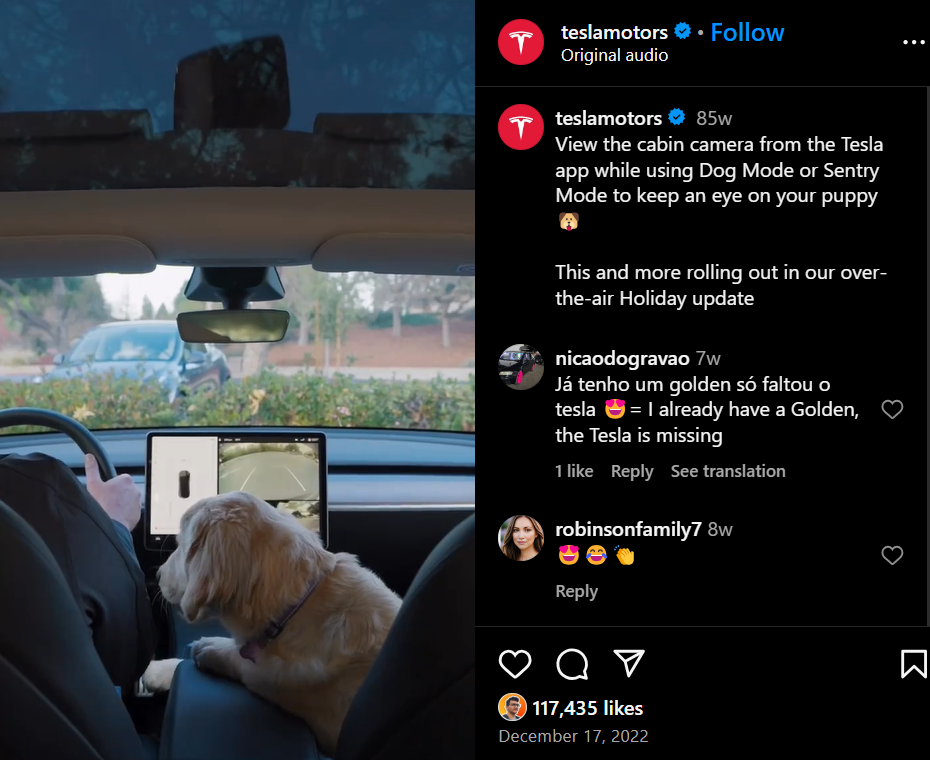
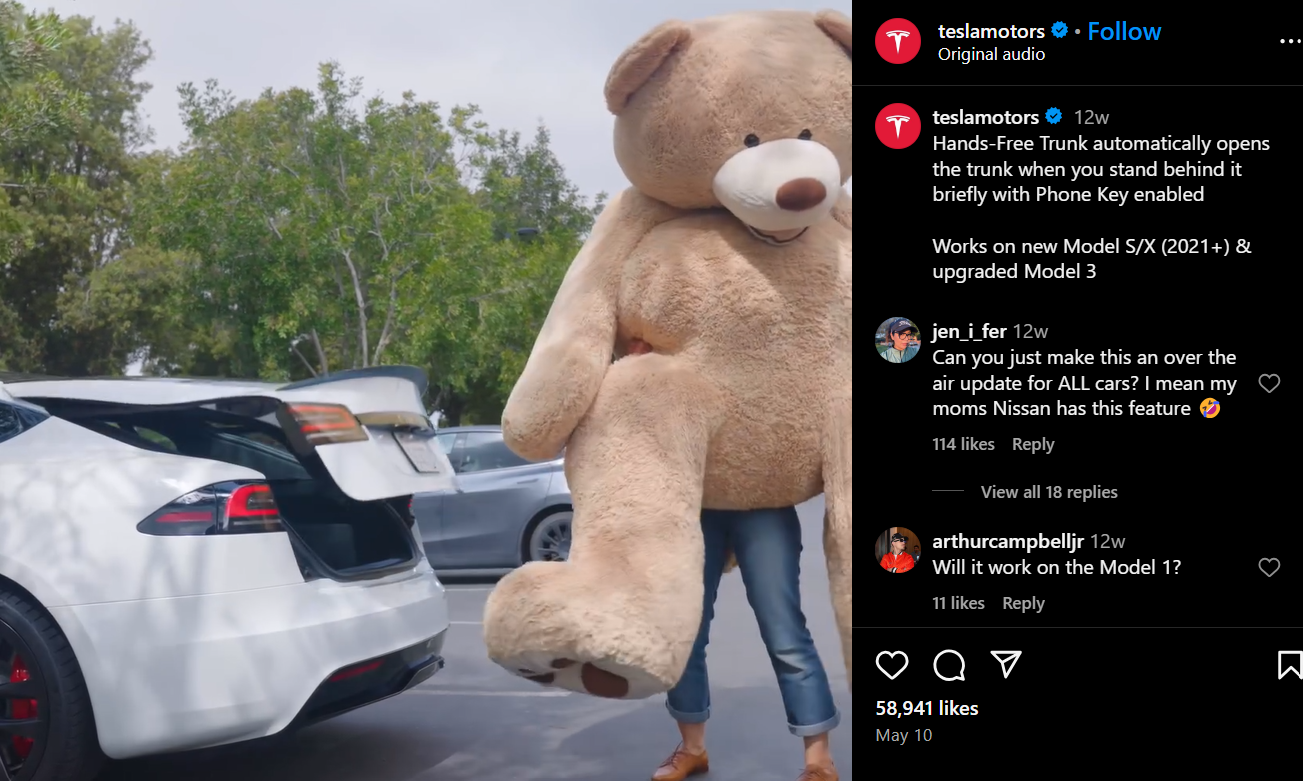
These value-based videos highlight Tesla's practical use in the customer's everyday life.
But it doesn't stop there.
The brand has dedicated YouTube playlists for each model's usability. If customers don't understand a particular feature, they can visit YouTube for a quick guide.

- Renault
Short-form videos are versatile and crisp, making them perfect for cheeky content.
That's what Renault did for its recent launch, the Scenic E-tech (100% EV). The brand taps into one of its key demographics: the millennials who are aunties and uncles today.
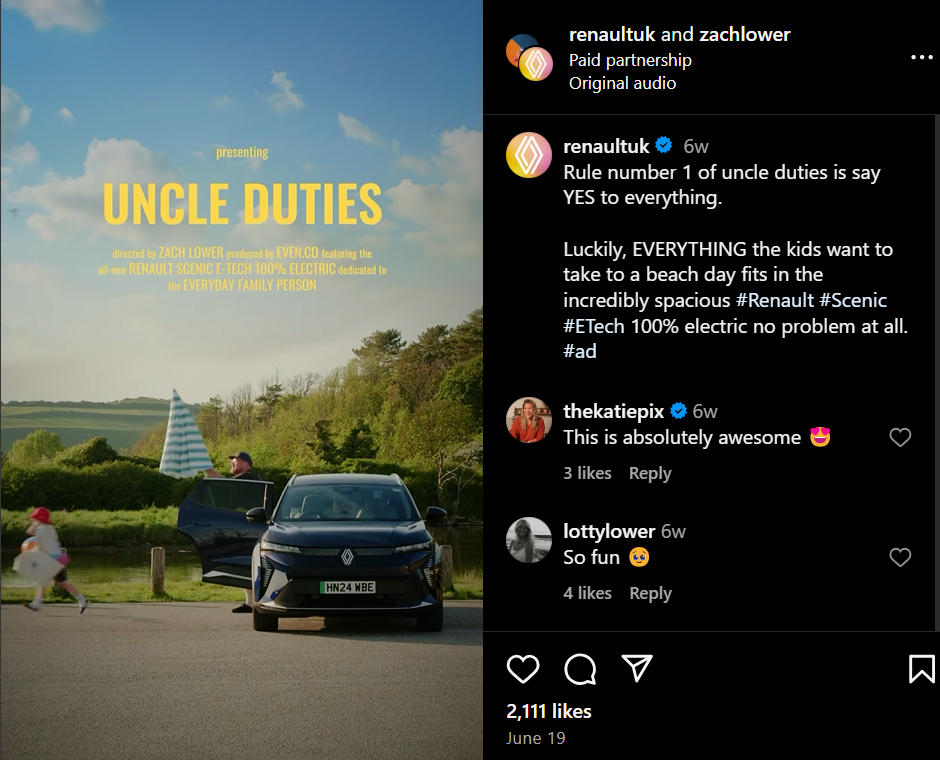
A short video shows how their EV has more than enough space for ‘uncle duties'–driving nieces and nephews to picnics and games with all their fun luggage.
E. Customer testimonials and user-generated content
Testimonials show aspiring buyers how existing customers derive value from your automotive products. Buyers can relate better, ultimately feeling encouraged to visit a dealership and take a test drive.
Similarly, user-generated content (UGC) influences buyers through videos driven purely by your customers. Because the brand isn't involved, UGC adds more credibility to your product via firsthand experiences.
How brands use customer testimonials and UGC
- Volkswagen
Volkswagen UK collected real customer testimonials through its #YourWagen campaign. Because they were collected organically, the testimonials seemed more authentic.
The brand then created a series of videos on YouTube (about 1 to 2 minutes per video) highlighting each customer's interesting, emotional and unique ownership story.

YourWagen Stories - Episode 1 (Volkswagen UK, YouTube)
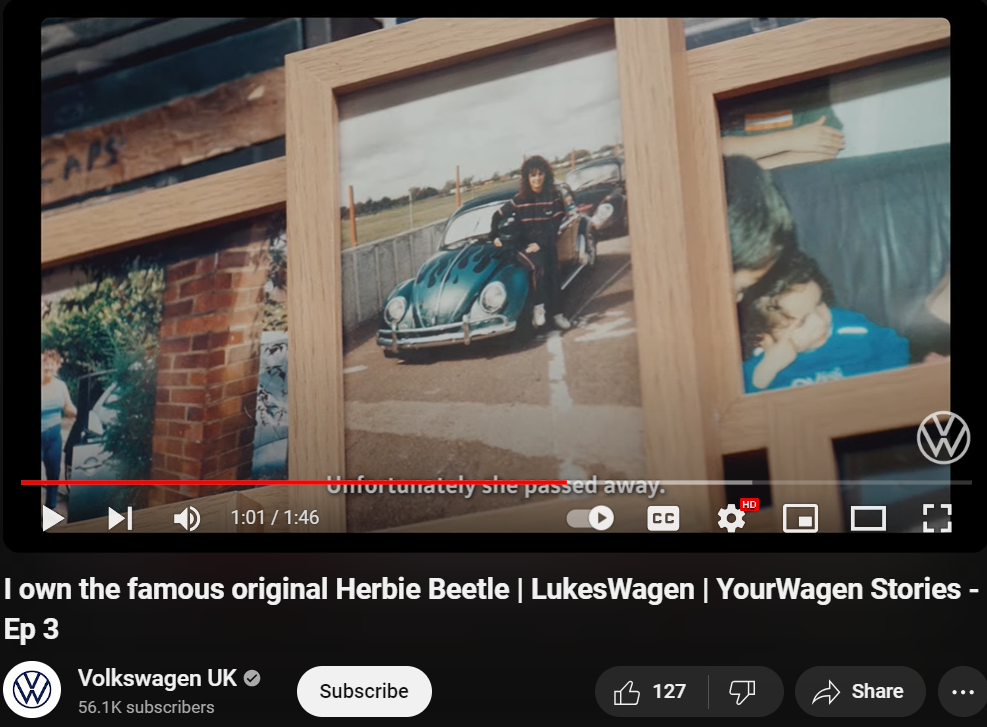
YourWagen Stories - Episode 3 (Volkswagen UK, YouTube)
- Volvo
UGC is easy to create and doesn't need high-quality production (also considering high-resolution camera phones are common today), making it the perfect content format for everyday people.
And given its popularity, social platforms are taking note. You'll notice how YouTube, TikTok and Instagram include UGC in their search results.
Check out the UGC videos for Volvo XC90 on YouTube Shorts. They appear as a distinct section when customers search for the car on the platform.

YouTube Shorts of UGC included in the search results for XC90
Likewise, TikTok, a social platform popular for UGC videos, puts them at the forefront of search.
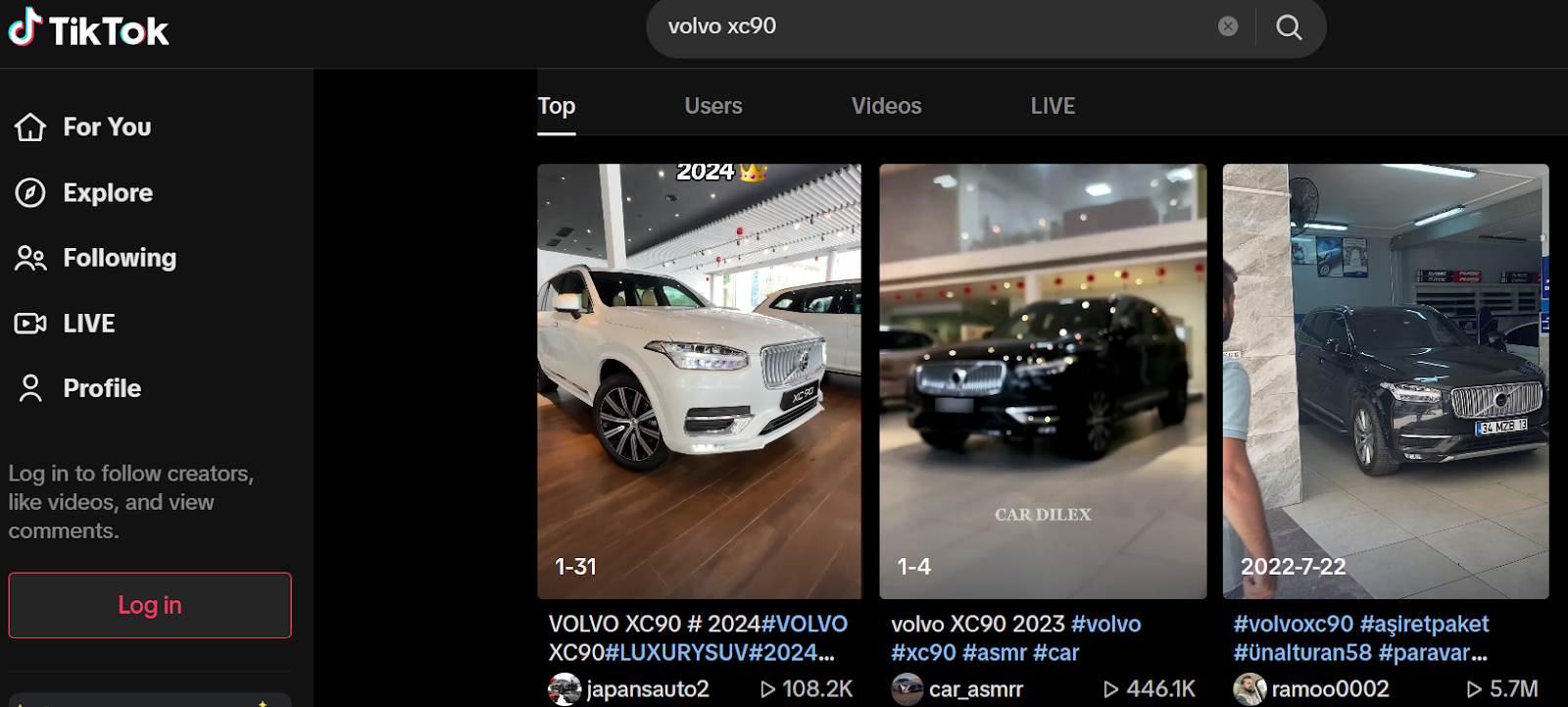
TikTok search results for Volvo XC90
F. Influencer collaborations and automotive publishers
Partnering with influencers, automotive publishers, and other brands increases your reach. You get to capitalise on the partner or publisher's audience, extending their positive sentiment to your brand.
How brands use collaborations and publishers
- Chevrolet
Chevrolet tied up with relatable influencers on TikTok and Instagram rather than celebrities with a huge fan following. This collaboration looks more natural, showing how the brand's cars improve influencers' lives.
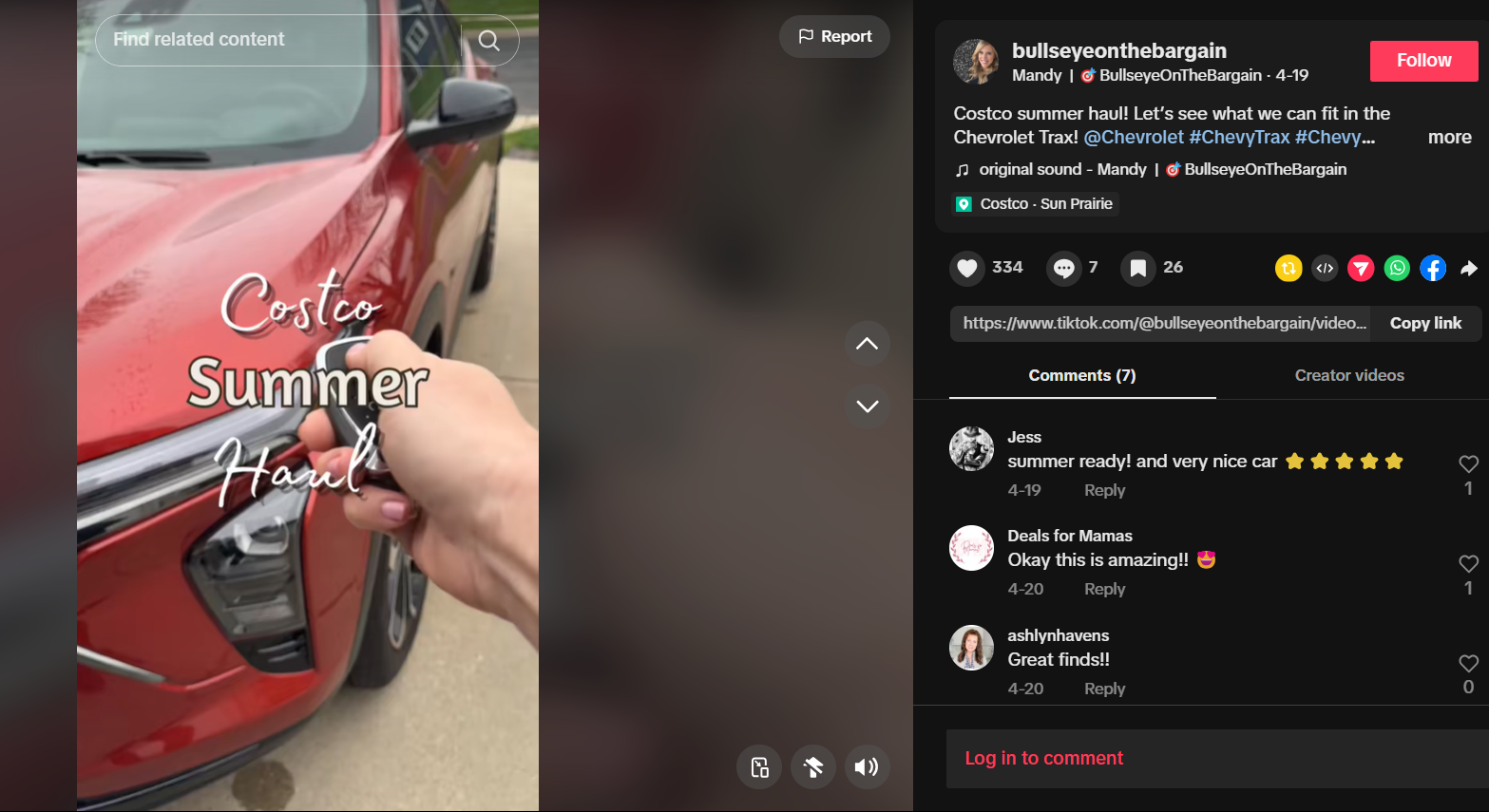
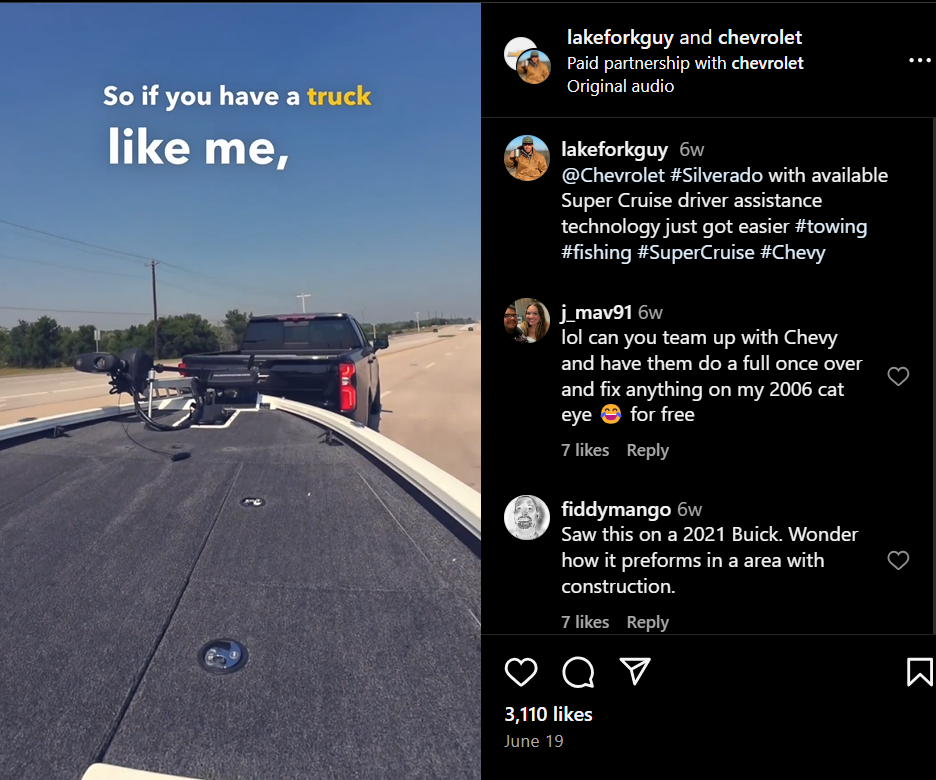
- Electrifying
Premium automotive publishers post long-form review videos with objective experts. Take, for instance, Electrifying's review of BYD Seal (considering the publisher has authority in the EV space).

Electrifying also experiments with different concepts like Would you rather?, First Drive, First Look, Group Tests, Small EVs and Used Car Reviews to make its videos more interesting.
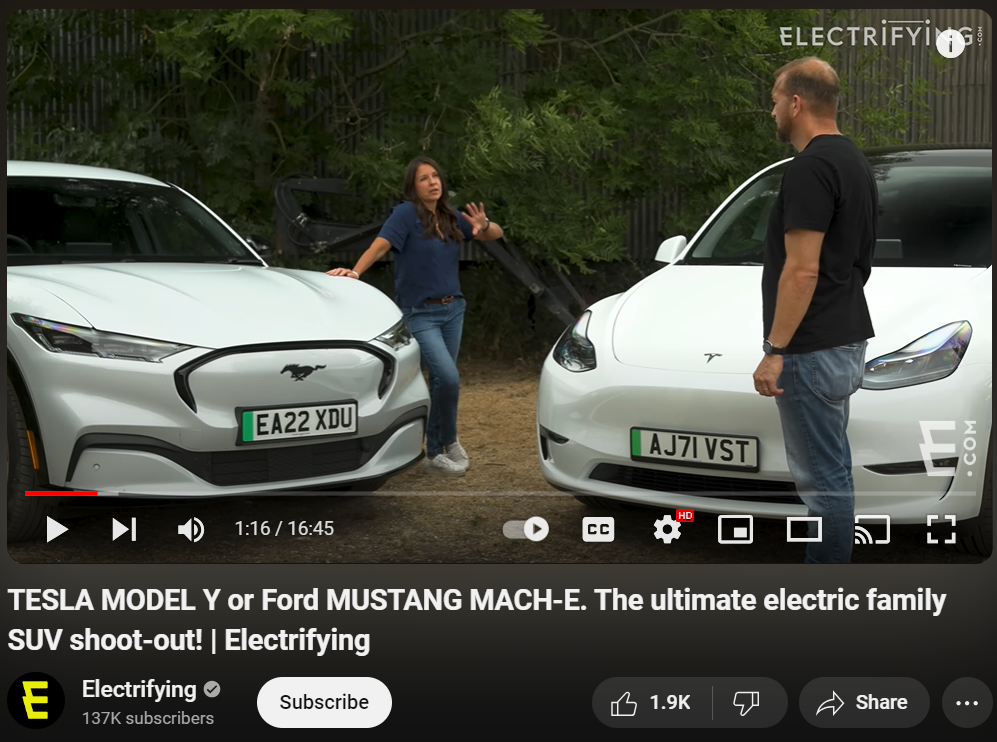
What's essential is that high-intent leads are the ones checking out full-length publisher videos. They use reviews to learn more about your product and compare it with others.
Automotive publishers are particularly helpful for creating several videos on product walkthroughs and value-based content. Collaborate with them to boost your video marketing and bring in quality leads
Top platforms to consider for automotive videos
Engaging video ideas are great, but you must also distribute them on the right platforms to maximise ROI.
From our observations, YouTube, Instagram and TikTok are the frontrunners for successful video marketing.
Tops Platforms for Video Marketing
YouTube
- 41% of automotive buyers use YouTube when searching for a car to purchase.
- 78% of marketers rate YouTube as the most effective video platform–the highest among other social channels.
- Usage of Instagram Reels is increasing, with brands sharing 46% more Reels in 2023 over 2022.
- Instagram is the third-most used (79% of marketers) video marketing platform
TikTok
- 67% of TikTok users looking to purchase a car, discovered a new brand or product on the platform
- TikTok is also quickly becoming the search engine of choice for GenZ (the next generation of automotive buyers).
YouTube works best for long-form videos (anything between 1 minute and 30 minutes long). Use it to post brand videos, product launches, walkthroughs, customer testimonials and automotive publisher reviews.
You can amplify these via short-form videos on YouTube Shorts, Instagram Reels and TikTok.
On the other hand, value-based content, UGC and influencer collaborations are best consumed through snackable videos on Shorts, Reels and TikTok.
Best practices for automotive video marketing
Take these into consideration before going all out with video marketing:
1. Aim for value
Instead of focusing extensively on budget, consider the video channel (e.g., YouTube or Instagram) and your target audience present on them.
Today, viewers enthusiastically consume videos, even those produced on a low budget. What matters more is the value you provide through each video.
For example, if you're an electric vehicle OEM, a video on ‘busting EV myths' is informative and educative for your EV/PHEV buyer audience and is, therefore, more valuable.
When building your video strategy, find out what your audience is looking for and create videos that address these queries.
2. Integrate with the overall buyer journey
“Video plays a critical role at every stage of our marketing and sales funnel (flywheel).” – Kyle Denhoff, Director of Marketing, Audience Development (HubSpot)
Customers are internet-savvy and use multiple platforms.
Therefore, it's essential to integrate video in every stage of the automotive buyer journey–from awareness (e.g., brand and product launch videos) to after-sales (e.g., video guides).
3. Refine your video distribution game
Maintaining your presence on several channels lets you engage with more customer segments, promote top of mind recall and generate high-intent leads.
But instead of creating multiple videos for each platform, you can post a hero video and distribute it on other channels.
For instance, your hero piece could be a long-form product walkthrough on YouTube and your website. It can be amplified via snippets on YouTube Shorts, Instagram Reels, TikTok and email.
4. Leverage first-party data
Video content attracts leads. But the traditional way of publishing big-budget videos on TV and leaving it up to a chance of attracting leads isn't compelling enough anymore.
To maximise your ROI, you need to capture leads immediately after they've viewed your video and nurture them for conversion.
You can do this by collecting first-party data using video ads and having a CTA leading to (a) native lead forms or (b) landing pages with web forms.
BMW Spain successfully used native lead forms in video ads to reduce CPL by as much as 47% and increase lead quality.

On the other hand, Kia used video ads to redirect leads to its landing page where a web form collects first-party data.

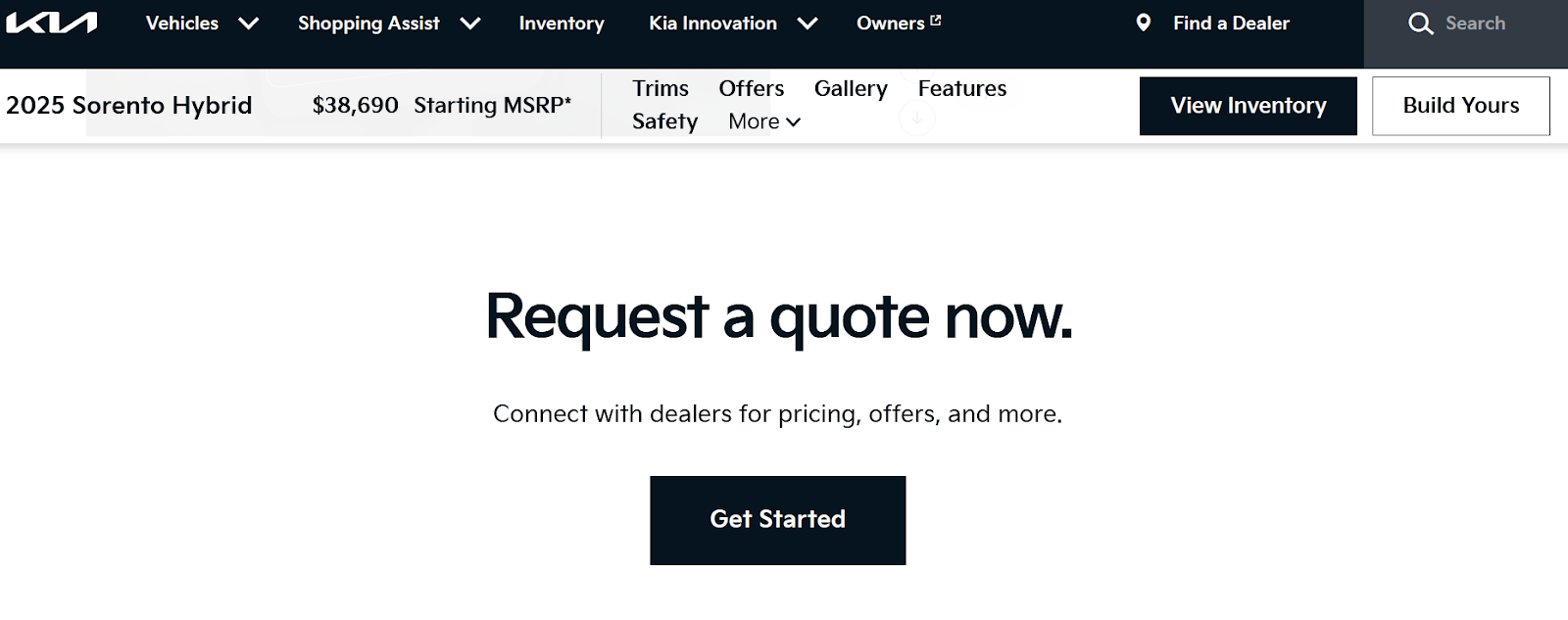
Level up your video marketing
We hope these examples and ideas inspire you to create valuable videos for automotive buyers!
To get more automotive marketing insights in your inbox, join The Driftrock Accelerator club.
Driftrok has enabled over $270 million in New Vehicle Sales in the last 12 months, working with 46 automotive brands across 12 markets to level up their marketing and lead generation efforts.




